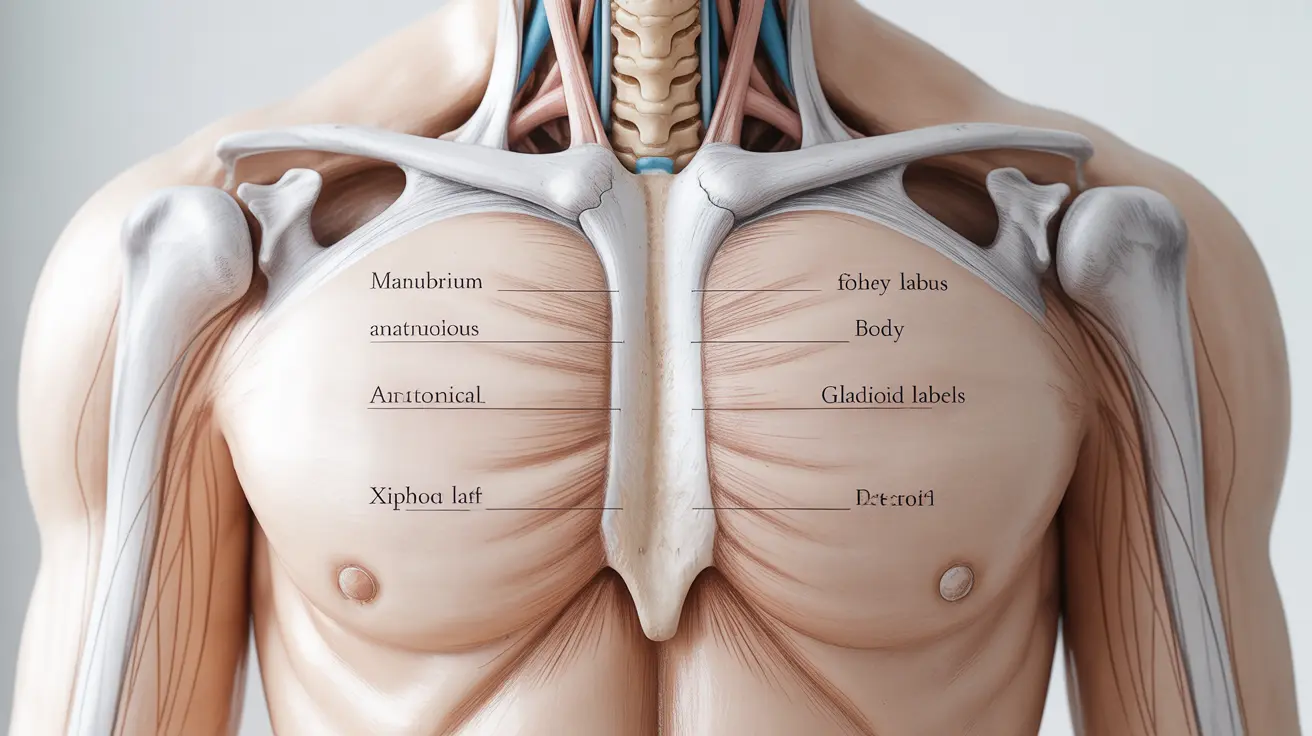The sternum, commonly known as the breastbone, is a crucial part of the human skeletal system that plays a vital role in protecting our most important organs and maintaining upper body structure. This flat, elongated bone sits in the center of the chest and serves as an anchor point for several other important bones and muscles.
Understanding your sternum's anatomy and function is essential for recognizing potential health issues and maintaining overall chest health. Let's explore this important bone's structure, common conditions affecting it, and when you should seek medical attention.
Anatomy of the Sternum
The sternum consists of three distinct parts, each serving specific functions in chest wall stability and protection:
The Manubrium
Located at the top of the sternum, the manubrium is the broadest and thickest portion. It connects to the clavicles (collarbones) and the first two pairs of ribs, forming a sturdy upper chest framework.
The Body (Gladiolus)
The main shaft of the sternum, called the body or gladiolus, is the longest portion. It connects with ribs three through seven on each side, creating a protective cage for vital organs.
The Xiphoid Process
This small, cartilaginous extension at the bottom of the sternum starts soft in young people and typically ossifies (hardens) with age. It serves as an attachment point for abdominal muscles and the diaphragm.
The Sternum's Protective Role
The sternum acts as a crucial component of the chest wall, providing several essential protective functions:
- Protection of vital organs, including the heart and lungs
- Stabilization of the ribcage structure
- Support for shoulder movement and upper body flexibility
- Attachment points for major chest and abdominal muscles
Common Sternum Conditions and Injuries
Traumatic Injuries
The sternum can be affected by various traumatic injuries, particularly from direct chest impact or severe compression. Common injuries include:
- Fractures from car accidents or direct trauma
- Bruising from sports injuries or falls
- Separation of the sternocostal joints
Non-Traumatic Conditions
Several conditions can affect the sternum without direct injury:
- Costochondritis (inflammation of cartilage connecting ribs to sternum)
- Sternoclavicular joint arthritis
- Bone infections (rare)
- Developmental abnormalities
Treatment and Management
Treatment for sternum-related conditions varies depending on the specific issue but may include:
- Rest and activity modification
- Pain management medications
- Physical therapy and gentle exercises
- Surgery in severe cases
- Protective bracing or support
When to Seek Medical Attention
Seek immediate medical care if you experience:
- Severe chest pain
- Difficulty breathing
- Visible deformity of the chest wall
- Pain that worsens with movement or deep breathing
- Swelling or discoloration around the sternum
Frequently Asked Questions
1. What are the main parts of the sternum and their functions? The sternum has three main parts: the manubrium (top portion connecting to collarbones), the body (middle section connecting to ribs), and the xiphoid process (bottom tip). Each part helps protect vital organs and provides attachment points for muscles and bones.
2. What causes sternum pain and how is it treated? Sternum pain can be caused by trauma, inflammation, infection, or strain. Treatment typically includes rest, pain medication, physical therapy, and in some cases, surgery, depending on the underlying cause.
3. How does the sternum protect the heart and lungs? The sternum acts as a central anchor point for the ribcage, creating a protective bone cage around vital organs. It helps absorb impact and distribute force across the chest wall to prevent organ damage.
4. What injuries can affect the sternum and what are their symptoms? Common injuries include fractures, bruising, and joint separation. Symptoms typically include chest pain, tenderness, difficulty breathing, and pain with movement or deep breathing.
5. How does the xiphoid process change with age and why is it important? The xiphoid process starts as cartilage in young people and gradually ossifies (turns to bone) with age. It's important as an attachment point for the diaphragm and abdominal muscles, and its position can help medical professionals locate the correct position for CPR.




